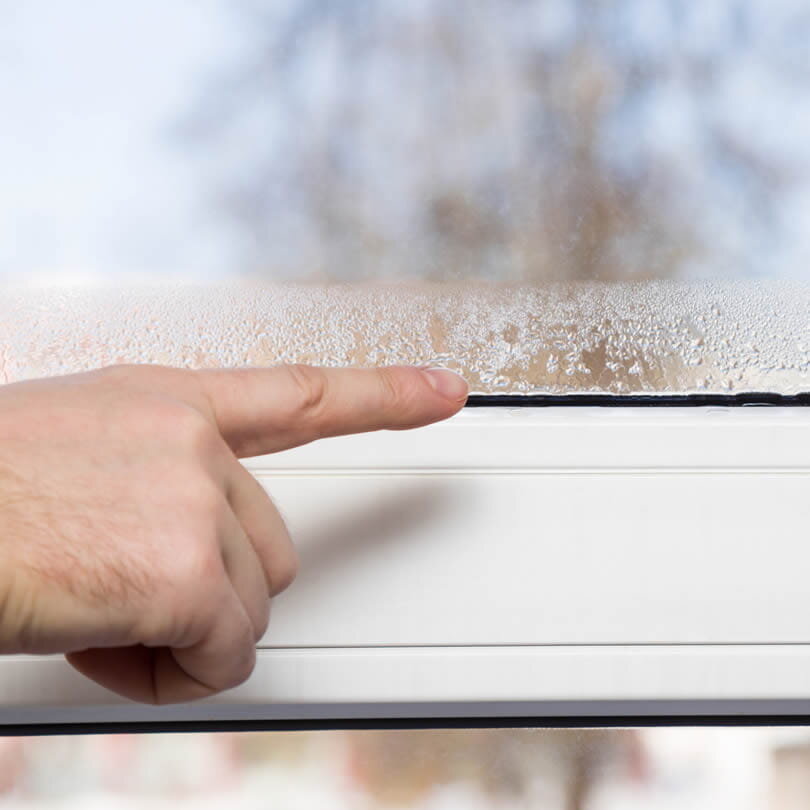Indoor humidity: a challenge on many levels
Although the temperature often serves as a benchmark for indoor comfort, humidity plays an important role as well. It not only affects our comfort, but also our health and the condition of our buildings.
That’s why it’s important to understand the challenges and effects of proper humidity management.

Indoor humidity levels
The recommended humidity levels inside a building are between 50 and 60%. This can be easily measured with a hygrometer or a thermometer that displays the relative humidity levels (i.e. the amount of water in the air relative to the temperature). Keeping the humidity within this range isn’t always that straightforward, but surely important to safeguard indoor air quality.
Low humidity
Our health is negatively impacted by low humidity levels in the environment in a number of ways. As the cornea dries out from the air's extremely low humidity, one of the first signs of being inside an overly dry atmosphere is surely a rising pain in the eyes. Even our skin is uncomfortable in an atmosphere with low humidity levels, and it manifests this intolerance by visibly cracking, especially on the hands and face. Both an excessive amount of humidity and a lack of humidity may harm the lungs and respiratory system. The dryness of the mucous membranes is actually an issue that shouldn't be taken lightly because it might exacerbate an allergy or asthma attack and weaken our body's natural defenses.
High humidity
Although the effects of low humidity are certainly unpleasant, the risks associated with high humidity levels are more far-reaching. After all, high indoor air humidity causes an increase in the humidity of building materials, surface materials and structural materials. When these materials become moist, they are a breeding ground for mold, mildew and bacteria. Microbial growth can trigger or exacerbate allergies and cause illness. "On top of that, mold growth and rot can also damage building structures. During the heating season, the humidity in the room air tends to transfer to the building envelope unless the vapor barrier is properly implemented. In this case, moisture condenses inside the structure and, in addition to microbial growth, causes a decrease in thermal insulation and an increase in heating energy consumption", says Mikko Iivonen, Senior R&D Adviser at Purmo Group.
Understanding indoor humidity
To ensure a proper humidity management and avoid the risks associated with low and high humidity, it’s important to understand how moisture originates. On the one hand, there is a small amount of moisture that enters the building from outside with ventilation air supply, but the main source of humidity is the residents and their activities inside the structure. Each person, with breathing and sweating, produces on average from one liter to one and a half liters of water per day in the form of water vapor that spreads into the surrounding environment.
Ventilation
The only way to reduce excessive indoor humidity is proper ventilation. In residential buildings, for example, ventilation ensures that clean outdoor air is brought into the rooms and stale, moist indoor air is removed mainly from bathrooms and kitchens. In modern window constructions with improved joint tightness or in rooms without windows, extra care should be taken to ventilate the rooms and possibly provide forced ventilation; a sufficient ventilation value is considered equal to 0.5 vol/h. Considering the importance of ventilation, it’s not surprising that a ventilation concept is obligatory for renovations and new buildings nowadays.




